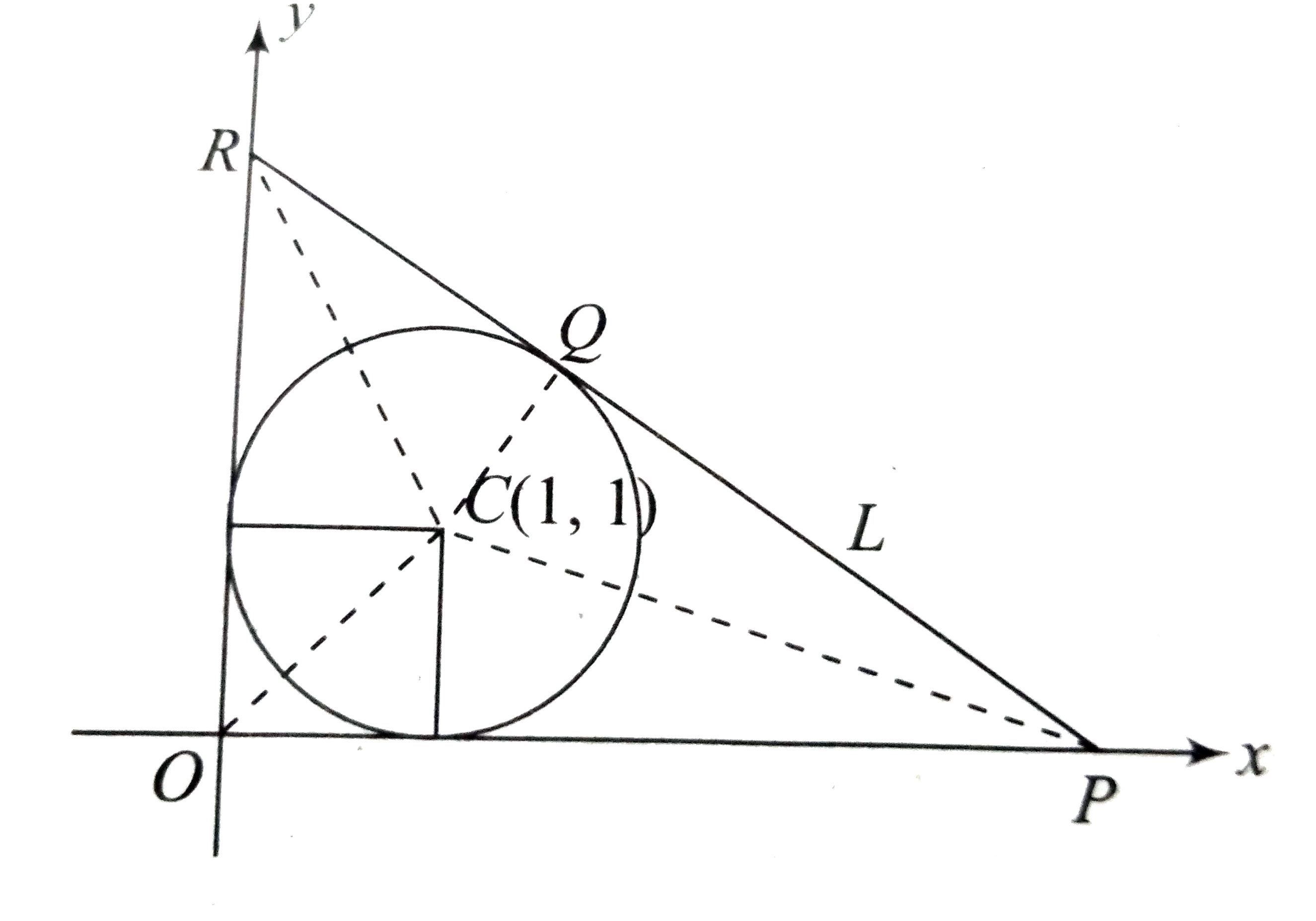Let the complex numbers z1,z2 and z3 be the vertices of an equailateral triangle. If z0 is the circumcentre of the triangle , then prove that z21+z22+z23=3z20.Solution in Bengali
Let A(z1),B(z2) and C(z3) be the vertices of an equilateral triangle.
∴ z21+z22+z23=z1z2+z2z3+z1z3 (1)
Now, (z1+z2+z3)2=z21+z22+z23+2(z1z2+z2z3+z1z3)
=3(z21+z22+z23) (Using (1))
Also, we have z0=z1+z2+z33 (as centroid will coincide with circumcentre)
(z1+z2+z3)2=9z20
So, z21+z22+z23=3z20
Topper's Solved these Questions
- COMPLEX NUMBERSBOOK - CENGAGE PUBLICATIONCHAPTER - COMPLEX NUMBERSEXERCISE - SLOVED EXAMPLES
15 Videos
- COMPLEX NUMBERSBOOK - CENGAGE PUBLICATIONCHAPTER - COMPLEX NUMBERSEXERCISE - EXERCISE3.1
4 Videos
- COMPLEX NUMBERSBOOK - CENGAGE PUBLICATIONCHAPTER - COMPLEX NUMBERSEXERCISE - Comprehension
11 Videos
- CIRCLESBOOK - CENGAGE PUBLICATIONCHAPTER - CIRCLESEXERCISE - Comprehension Type
8 Videos
- CONIC SECTIONSBOOK - CENGAGE PUBLICATIONCHAPTER - CONIC SECTIONSEXERCISE - All Questions
102 Videos
Similar Questions
ifωandω2 are the nonreal cube roots of unity and [1/(a+ω)]+[1/(b+ω)]+[1/(c+ω)]=2ω2 and [1/(a+ω)2]+[1/(b+ω)2]+[1/(c+ω)2]=2ω , then find the value of [1/(a+1)]+[1/(b+1)]+[1/(c+1)].
View SolutionIs the following computation correct? If not give the correct computation: [√(−2).√(−3)]=√(−2).−3=√6
View SolutionConsider the region R in the Argand plane described by the complex number. Z satisfying the inequalities |Z−2|≤|Z−4|, |Z−3|≤|Z+3|, |Z−i|≤|Z−3i|, |Z+i|≤|Z+3i|
Answer the followin questions :
Maximum of |Z1−Z2| given that Z1, Z2 are any two complex numbers lying in the region R is
View Solution
In the diagram as shown, a circle is drawn with centre C(1,1) and radius 1 and a line L. The line L is tangent to the circle at Q. Further L meets the y-axis at R and the x-axis at P in such a way that the angle OPQ equals θ where 0<θ<π2.
Coordinate of Q is
View SolutionGiven that A(1,1) and B(2,−3) are two points and D is a point on AB produced such that AD=3AB. Find the coordinates of D.
View SolutionIf z1,z2andz3 are the vertices of an equilateral triangle, then 1z1−z2+1z2−z3+1z3−z1=0
View SolutionLet the complex numbers z1,z2 and z3 be the vertices of an equailateral triangle. If z0 is the circumcentre of the triangle , then prove that z21+z22+z23=3z20.
View SolutionIf z1,z2andz3 are the vertices of an equilasteral triangle with z0 as its circumcentre , then changing origin to z0 ,show that z21+z22+z23=0, wherez1,z2,z3, are new complex numbers of the vertices.
View SolutionIf the vertices of an equilateral triangle be represented by the complex numbers z1,z2,z3 on the Argand diagram, then prove that,
z21+z22+z23=z1z2+z2z3+z3z1.
View SolutionIf the complex numbers z1,z2,z3 represents the vertices of an equilaterla triangle such that |z1|=|z2|=|z3|, show that z1+z2+z3=0
View Solutionयदि सम्मिश्र संख्याएँ z1,z2 व z3 एक समबाहु त्रिभुज के शीर्षों को प्रदर्शित करती है तथा |z1|=|z2|=|z3|, तो z1+z2+z3=0 होगा |
View Solutionमाना सम्मिश्र संख्याएँ z1,z2 और z3 एक समबाहु त्रिभुज के शीर्ष है तथा z0 त्रिभुज का परिकेन्द्र (circumcentre) है, तो सिद्ध कीजिए कि z21+z22+z23=3z20
View SolutionLet the complex number z1,z2,z3 be the vertices of an equilateral triangle . Let zθ be the circumcentre of the triangle . Then z21+z22+z23=
View SolutionLet the complex numbers z1,z2 and z3 be the vertices of an equailateral triangle. If z0 is the circumcentre of the triangle , then prove that z21+z22+z23=3z20.
View Solutionवक्तव्य 1 माना z1,z2,z3 तीन सम्मिश्र संख्यायें इस प्रकार है कि |3z1+1|=|3z2+1|=|3z3+1| तथा 1+z1+z2+z3=0 हो तो z1,z2,z3 सम्मिश्र तल में समबाहु त्रिभुज के शीर्षों को निरूपित करेंगे।
और
वक्तव्य 2: z1,z2,z3 समबाहु त्रिभुज के शीषो्रं को निरूपित करेंगें यदि z21+z22+z23=z1z2+z2z3+z3z1 हो।
View SolutionIf the complex numbers z1,z2,z3 represent the vertices of an equilateral triangle, and |z1|=|z2|=|z3|, prove that z1+z2+z3=0
View Solution
